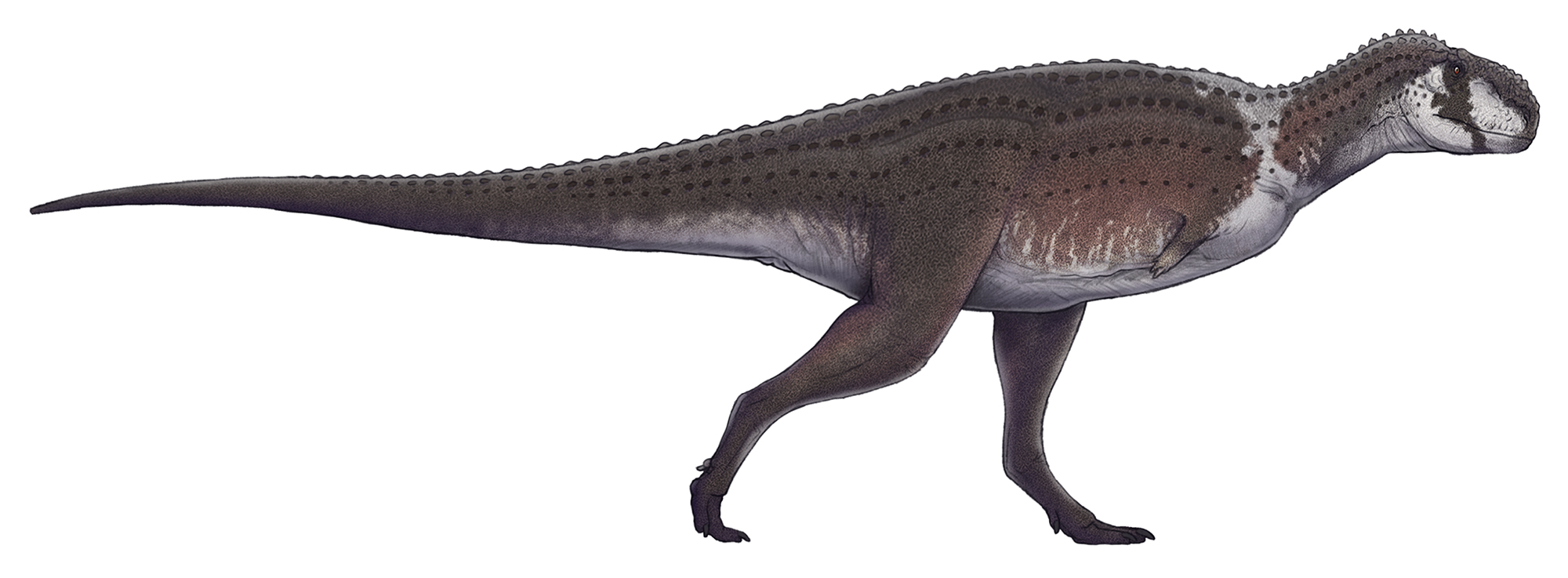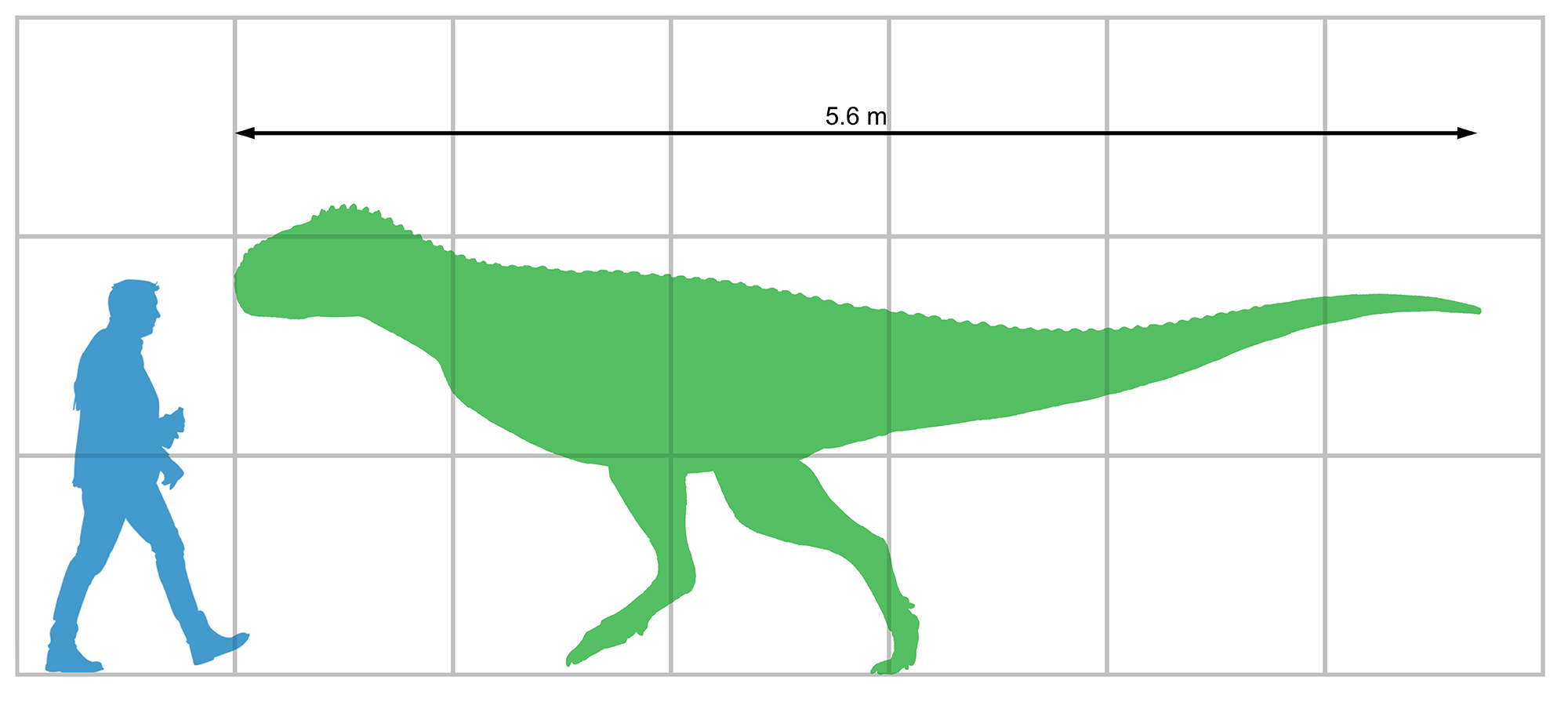|
Carnotaurine
Carnotaurinae is a subfamily of the theropod dinosaur family Abelisauridae. It includes the dinosaurs ''Aucasaurus'' (from Argentina), '' Carnotaurus'' (from Argentina). The group was first proposed by American paleontologist Paul Sereno in 1998, defined as a clade containing all abelisaurids more closely related to ''Carnotaurus'' than to '' Majungasaurus''. Classification *Subfamily Carnotaurinae **Brachyrostra ***'' Ekrixinatosaurus'' (Argentina) ***'' Elemgasem'' (Argentina) ***''Guemesia'' (Argentina) ***''Ilokelesia'' (Argentina) ***'' Skorpiovenator'' (Argentina) ***'' Thanos'' (Brazil) *** Furileusauria ****?'' Niebla'' (Argentina) ****''Llukalkan'' (Argentina) ****''Viavenator'' (Argentina) ****'' Pycnonemosaurus'' (Brazil) ****'' Quilmesaurus'' (Argentina) ****Carnotaurini *****'' Carnotaurus'' (Argentina) *****Abelisaurinae ******''Aucasaurus'' (Argentina) ******''Abelisaurus'' (Argentina) Phylogeny In 2008, Canale ''et al.'' published a phylogenetic analysis ... [...More Info...] [...Related Items...] OR: [Wikipedia] [Google] [Baidu] |
Abelisauridae
Abelisauridae (meaning "Abel's lizards") is a family (or clade) of ceratosaurian theropod dinosaurs. Abelisaurids thrived during the Cretaceous period, on the ancient southern supercontinent of Gondwana, and today their fossil remains are found on the modern continents of Africa and South America, as well as on the Indian subcontinent and the island of Madagascar. Isolated teeth were found in the Late Jurassic of Portugal, and the Late Cretaceous genera '' Tarascosaurus'' and ''Arcovenator'' have been described in France. Abelisaurids first appear in the fossil record of the early middle Jurassic period, and at least two genera (the Moroccan ''Chenanisaurus'' and the Madagascan ''Majungasaurus'') survived until the end of the Mesozoic era 66 million years ago. Like most theropods, abelisaurids were carnivorous bipeds. They were characterized by stocky hind limbs and extensive ornamentation of the skull bones, with grooves and pits. In many abelisaurids, such as ''Carnotaurus'', ... [...More Info...] [...Related Items...] OR: [Wikipedia] [Google] [Baidu] |
Majungasaurinae
Majungasaurinae (after ''Majungasaurus'', itself named after the city of Mahajanga in Madagascar) is a subfamily of large carnivorous theropods from the Upper Cretaceous, found in Madagascar, India, and France. It is a subgroup within the theropod family Abelisauridae, a Gondwanan clade known for their thick and often horned skulls and vestigial arms. The two subfamilies of Abelisauridae are Carnotaurinae, best known from the South American ''Carnotaurus'', and Majungasaurinae, consisting of Madagascar’s ''Majungasaurus'' and its closest relatives. Their ancestors emerged in the Middle Jurassic, and the clade lasted until the Upper Cretaceous. The majungasaurines were mid-sized, bipedal predators, but relatively slow moving. Their stout legs were built for striding, not running. They had tall, deep heads with powerful jaws, but small forearms without carpals in the wrists. Because of their slow gait and small arms, they likely preyed upon the larger, slower sauropods rather th ... [...More Info...] [...Related Items...] OR: [Wikipedia] [Google] [Baidu] |
Ilokelesia
''Ilokelesia'' is an extinct genus of abelisaurid theropod,Coria, R.A.; Salgado, L. & Calvo, J.O. (1991) "Primeros restos de dinosaurios Theropoda del Miembro Huincul, Formación Río Limay (Cretácico Tardío Presenoniano), Neuquén, Argentina." ''Ameghiniana'', 28: 405-406. preserved in the layers of the earliest Late Cretaceous of the Huincul Formation, Neuquén Group, located near Plaza Huincul, Neuquén Province, Argentina. The specimen, consisting of very fragmentary elements of the skull and the axial and appendicular skeleton, was described by Rodolfo Coria and Leonardo Salgado in late 1998. Discovery and naming ''Ilokelesia'' is only known from very fragmentary elements of the skull and the axial and appendicular skeleton, discovered in 1991. It was discovered ten meters away from where the holotype of ''Huinculsaurus'' was discovered. The genus was named and described in 1998. Etymology The generic name's etymology is derived from the Mapuche language, ''ilo'' meani ... [...More Info...] [...Related Items...] OR: [Wikipedia] [Google] [Baidu] |
Abelisaurinae
Carnotaurini is a tribe of the theropod dinosaur family Abelisauridae from the Late Cretaceous period of Patagonia. It includes the dinosaurs ''Carnotaurus sastrei''; the type species, ''Aucasaurus garridoi'', and ''Abelisaurus comahuensis''. This group was first proposed by paleontologists Rodolfo Coria, Luis Chiappe, and Lowell Dingus in 2002, being defined as a clade containing "''Carnotaurus sastrei'', ''Aucasaurus garridoi'', their most recent common ancestor, and all of its decendants." Description Anatomical description and geological distribution Carnotaurins were relatively lightly built but large theropods, ranging in size from 6.1-7.8 m (20-25.6 ft) and 1400–2000 kg (1.6-2.3 tons) in weight. Their geographical distribution lied in South America, as all three species have been found in various formations in Argentina, being the Anacleto Formation of the Rio Colorado Subgroup in the Neuquén Basin and possibly the Sir Fernandez field of the Allen Formation ... [...More Info...] [...Related Items...] OR: [Wikipedia] [Google] [Baidu] |
Carnotaurini
Carnotaurini is a tribe of the theropod dinosaur family Abelisauridae from the Late Cretaceous period of Patagonia. It includes the dinosaurs ''Carnotaurus sastrei''; the type species, ''Aucasaurus garridoi'', and ''Abelisaurus comahuensis''. This group was first proposed by paleontologists Rodolfo Coria, Luis Chiappe, and Lowell Dingus in 2002, being defined as a clade containing "''Carnotaurus sastrei'', ''Aucasaurus garridoi'', their most recent common ancestor, and all of its decendants." Description Anatomical description and geological distribution Carnotaurins were relatively lightly built but large theropods, ranging in size from 6.1-7.8 m (20-25.6 ft) and 1400–2000 kg (1.6-2.3 tons) in weight. Their geographical distribution lied in South America, as all three species have been found in various formations in Argentina, being the Anacleto Formation of the Rio Colorado Subgroup in the Neuquén Basin and possibly the Sir Fernandez field of the Allen Formation ... [...More Info...] [...Related Items...] OR: [Wikipedia] [Google] [Baidu] |
Carnotaurini Sizes Updated
Carnotaurini is a tribe of the theropod dinosaur family Abelisauridae from the Late Cretaceous period of Patagonia. It includes the dinosaurs ''Carnotaurus sastrei''; the type species, ''Aucasaurus garridoi'', and ''Abelisaurus comahuensis''. This group was first proposed by paleontologists Rodolfo Coria, Luis Chiappe, and Lowell Dingus in 2002, being defined as a clade containing "''Carnotaurus sastrei'', ''Aucasaurus garridoi'', their most recent common ancestor, and all of its decendants." Description Anatomical description and geological distribution Carnotaurins were relatively lightly built but large theropods, ranging in size from 6.1-7.8 m (20-25.6 ft) and 1400–2000 kg (1.6-2.3 tons) in weight. Their geographical distribution lied in South America, as all three species have been found in various formations in Argentina, being the Anacleto Formation of the Rio Colorado Subgroup in the Neuquén Basin and possibly the Sir Fernandez field of the Allen Formation t ... [...More Info...] [...Related Items...] OR: [Wikipedia] [Google] [Baidu] |
Skorpiovenator
''Skorpiovenator'' ("scorpion hunter") is a genus of abelisaurid theropod dinosaur from the Late Cretaceous (Cenomanian to Turonian) Huincul Formation of Argentina. It is one of the most complete and informative abelisaurids yet known, described from a nearly complete and articulated skeleton. Description The preserved length of the excavated ''Skorpiovenator'' skeleton from the premaxilla to the 12th caudal vertebra is . It was estimated to have grown up to in length. In 2010, Gregory S. Paul gave larger estimations of and .Paul, G.S. (2010) ''The Princeton Field Guide to Dinosaurs'', Princeton University Press p. 81 In 2016, a similar size to the original estimate at has been estimated. It had short, stubby, near-useless arms, but strong legs with powerful thighs and sturdy shins over which its large body was balanced. Skull ''Skorpiovenators skull was short, stout and covered in the ridges, furrows, tubercles and bumpy nodules that are scattered over the heads of most ... [...More Info...] [...Related Items...] OR: [Wikipedia] [Google] [Baidu] |
Phylogenetic
In biology, phylogenetics (; from Greek φυλή/ φῦλον [] "tribe, clan, race", and wikt:γενετικός, γενετικός [] "origin, source, birth") is the study of the evolutionary history and relationships among or within groups of organisms. These relationships are determined by Computational phylogenetics, phylogenetic inference methods that focus on observed heritable traits, such as DNA sequences, protein amino acid sequences, or morphology. The result of such an analysis is a phylogenetic tree—a diagram containing a hypothesis of relationships that reflects the evolutionary history of a group of organisms. The tips of a phylogenetic tree can be living taxa or fossils, and represent the "end" or the present time in an evolutionary lineage. A phylogenetic diagram can be rooted or unrooted. A rooted tree diagram indicates the hypothetical common ancestor of the tree. An unrooted tree diagram (a network) makes no assumption about the ancestral line, and does ... [...More Info...] [...Related Items...] OR: [Wikipedia] [Google] [Baidu] |
Abelisaurus
''Abelisaurus'' (; "Abel's lizard") is a genus of predatory abelisaurid theropod dinosaur alive during the Late Cretaceous Period (Campanian) of what is now South America. It was a bipedal carnivore that probably reached about in length, although this is uncertain as it is known from only one partial skull. Discovery and naming Coining the type species ''Abelisaurus comahuensis'', both genus and species were named and described by Argentine paleontologists José Bonaparte and Fernando Emilio Novas in 1985. The generic name recognizes Roberto Abel as the discoverer of the type specimen, and also as the former director of the provincial Museum of Cipolletti in Argentina, where the specimen is housed. It also incorporates the Greek ('), meaning 'lizard'. The specific name ''comahuensis'' honors the Comahue region of Argentina, where the fossil was found. The holotype, MC 11098, was in 1983 uncovered at the "Cantera de la Pala Mécanica"-site in the Lago Pellegrini quarries exp ... [...More Info...] [...Related Items...] OR: [Wikipedia] [Google] [Baidu] |
Quilmesaurus
''Quilmesaurus'' is a genus of carnivorous abelisaurid theropod dinosaur from the Patagonian Upper Cretaceous (Campanian stage) of Argentina. It was a member of Abelisauridae, closely related to genera such as ''Carnotaurus''. The only known remains of this genus are leg bones which share certain similarities to a variety of abelisaurids. However, these bones lack unique features, which may render ''Quilmesaurus'' a ''nomen vanum'' (more commonly known as a ''nomen dubium'', or "dubious name"). Discovery and naming During the late 1980s, a field crew from the Universidad Nacional Tucumán, led by Jaime Powell, uncovered forty kilometres south of Roca City, in Río Negro province, southern Argentina, the remains of a theropod near the Salitral Ojo de Agua. In 2001, Rodolfo Aníbal Coria named and described the type species ''Quilmesaurus curriei''. The genus name is derived from the Quilme, a Native American people, and the specific name honours Dr. Philip John Currie, a Can ... [...More Info...] [...Related Items...] OR: [Wikipedia] [Google] [Baidu] |
Pycnonemosaurus
''Pycnonemosaurus'' (meaning 'dense forest lizard') is a genus of carnivorous theropod dinosaur that belonged to the family Abelisauridae. It was found in the Upper Cretaceous red conglomerate sandstones of the "Cabembe Unit", Mato Grosso, Brazil, and it lived about 70 million years ago during the Late Cretaceous (Maastrichtian stage). Discovery and naming The type species, ''Pycnonemosaurus nevesi'', was formally described by Kellner and Campos in 2002. The only known specimen was found in a red conglomeratic sandstone at the Fazenda Roncador locality, in Mato Grosso State that is exposed close to Paulo Creek, which is referred to an unidentified formation of the Upper Cretaceous Bauru Group. During 1952-1953, Llewellyn Ivor Price visited a farm named "Roncador" in the state of Mato Grosso and collected several dinosaur bones. These remains were found by the owner of the farm, Max de Barros Erhart, and his hired workers at the Paulo Creek site. The most important specimen fo ... [...More Info...] [...Related Items...] OR: [Wikipedia] [Google] [Baidu] |
Viavenator
''Viavenator'' (meaning "road hunter") is a genus of carnivorous abelisaurid theropod dinosaur discovered in Argentina's Bajo de la Carpa Formation. It coexisted with the megaraptoran '' Tratayenia rosalesi''. Classification Filippi classified ''Viavenator'' to a new clade known as the Furileusauria, which includes ''Viavenator'' as well as ''Carnotaurus''. This would have meant ''Viavenator'' was closer to ''Carnotaurus'' than ''Majungasaurus''. It would have been in length. Palaeobiology ''Viavenator'' possessed a similar brain morphology to ''Aucasaurus'', another South American abelisaurid and had a similar inner ear. Compared to the Madagascan abelisaurid ''Majungasaurus'', ''Viavenator'' was more reliant more on quick movements of the head and sophisticated gaze stabilization mechanisms; however, both genera had a similar range of hearing according to the examinations and subsequent CT scans of the cranium. See also * Timeline of ceratosaur research * 2016 in p ... [...More Info...] [...Related Items...] OR: [Wikipedia] [Google] [Baidu] |






